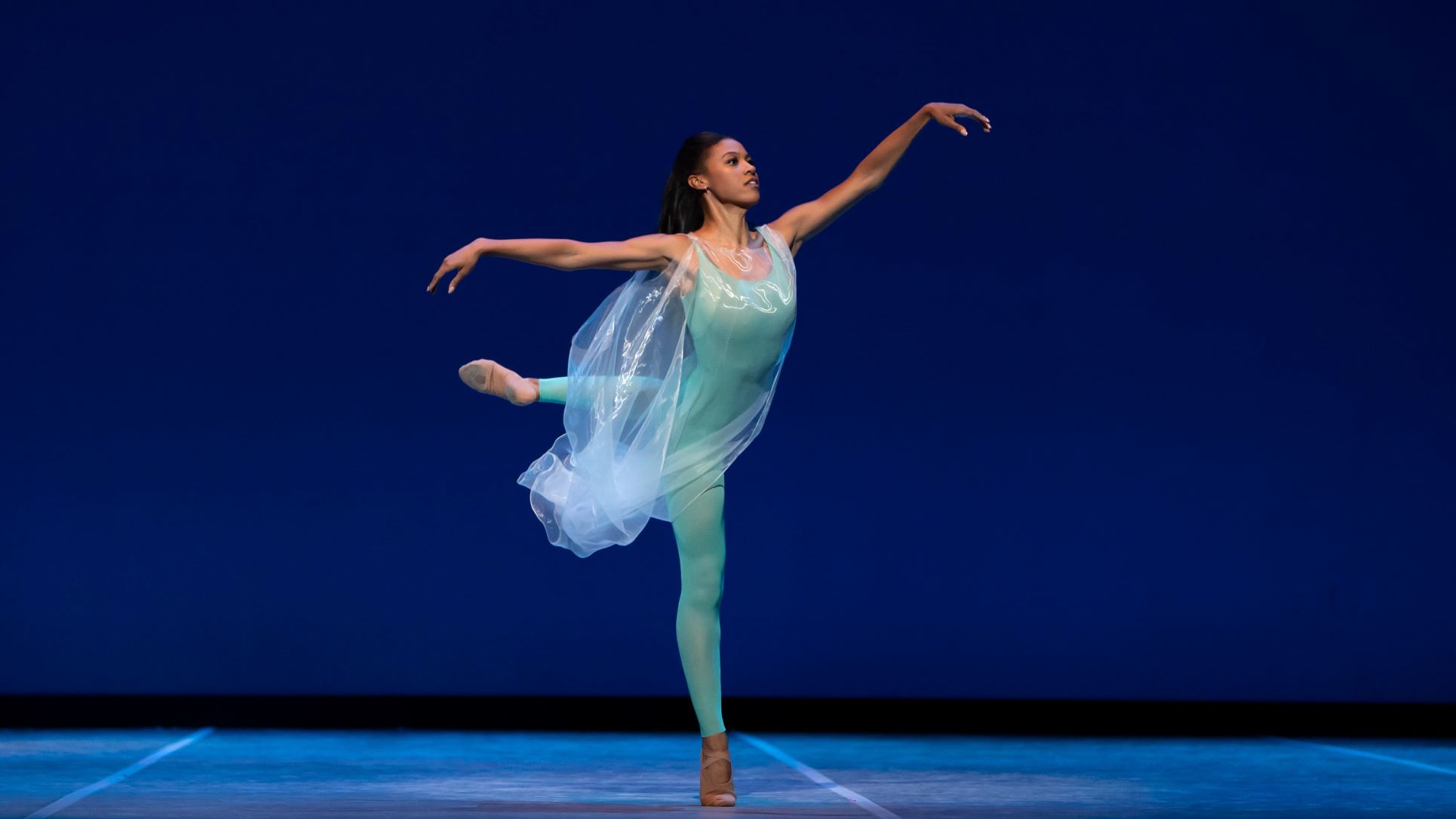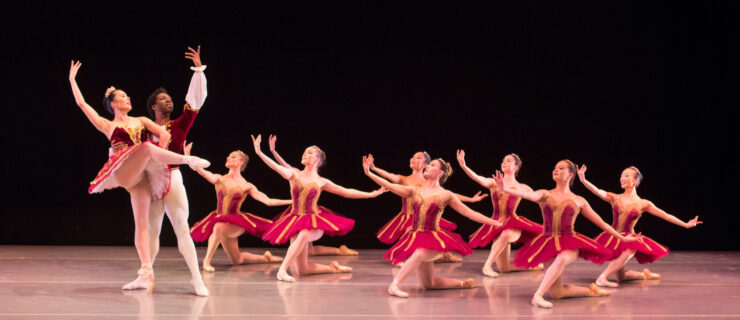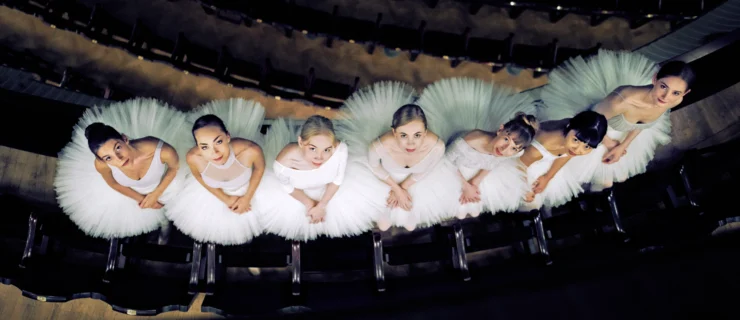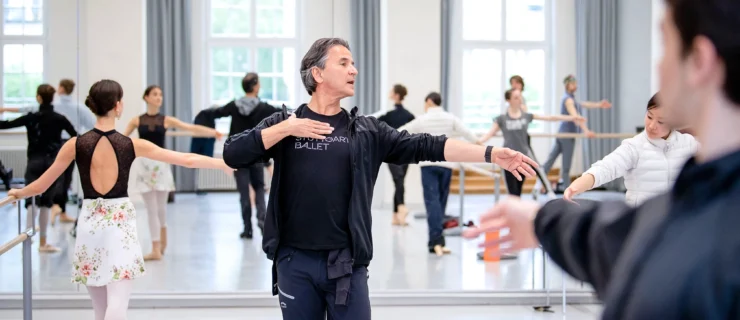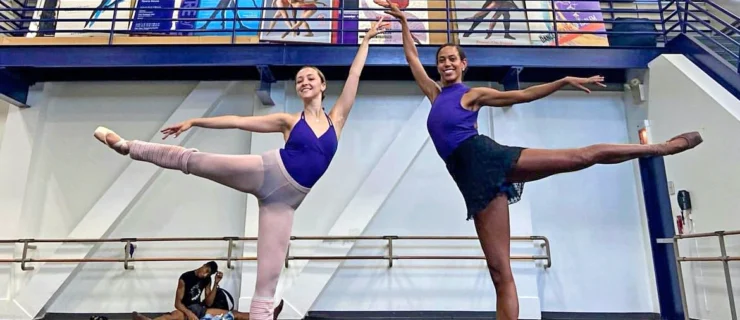How 3 Choreographers Revamped Their Pandemic Dance Films for Live Performances
For almost two years, the pandemic forced ballet dancers to step off the stage—and onto the screen. As dance organizations adjusted to keep audiences and dancers safe, many choreographers turned their focus to creating dance for film. Now, as companies have transitioned back to the theater, a number of dancemakers have redesigned their film creations for in-person performances.
What goes into transforming a work from screen to stage? What gets added, lost or modified? Pointe spoke with three choreographers to learn what made the process challenging and interesting, from adjusting their visions to rediscovering the joy of working with dancers in person.
Stephen Mills: PRELUDES/BEGINNINGS
In April 2021, Ballet Austin artistic director Stephen Millsunveiled PRELUDES/BEGINNINGS, a chilling dance film made in partnership with former company dancer and award-winning filmmaker Paul Michael Bloodgood. Set to Frédéric Chopin’s 24 Preludes for piano, the ballet was shot in Austin’s historic Scottish Rite Theater and explores the idea of ghostly presences in theatrical spaces. The work, featuring 23 solo dances and one pas de deux, won a Lone Star Emmy award in Entertainment—Short Form or Long Form Content.
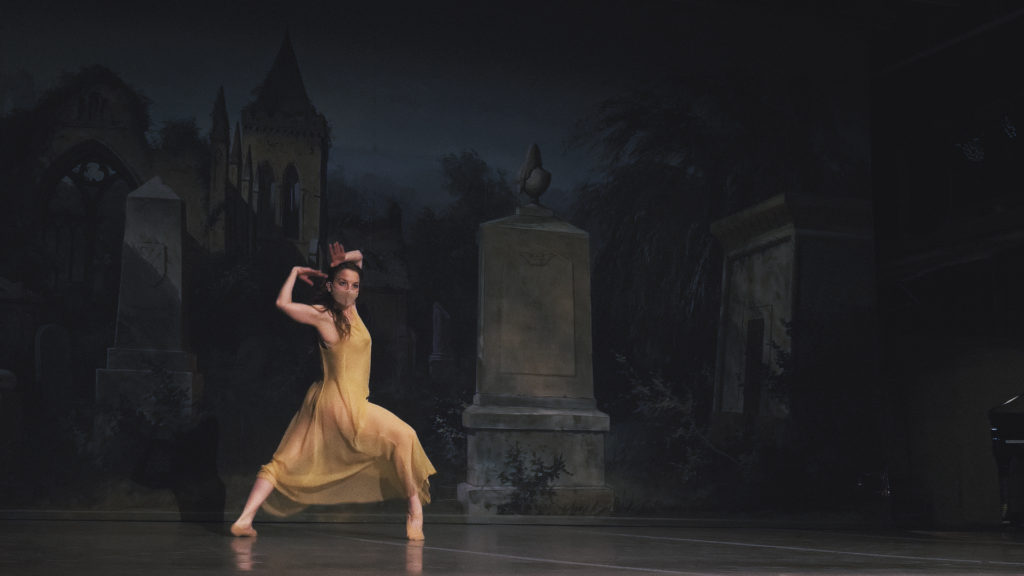
Mills recalls the process feeling “circumstantial,” largely influenced by the theater space and COVID safety protocols. Dancers were masked and remained almost entirely distanced. And while he enjoyed the filmmaking process, Mills felt unsatisfied by the limited dialogue he could have with audiences.
“I felt the dance was strong and the work the dancers did was really strong,” says Mills. “I wondered what it would be like to move it from the digital format to live performance, with a musician onstage, stripping away the narrative.”
Mills started reworking PRELUDES/BEGINNINGS for the company’s September 2021 performances at Austin’s Long Center for the Performing Arts.The stage version looks quite different—Mills pared the cast down to five dancers out of the original 20 and linked existing choreographic phrases together into longer solos, duets and quartets. The ballet also underwent a visual redesign, with new lighting, spacing and colorful costumes by Reid Bartelme and Harriet Jung.
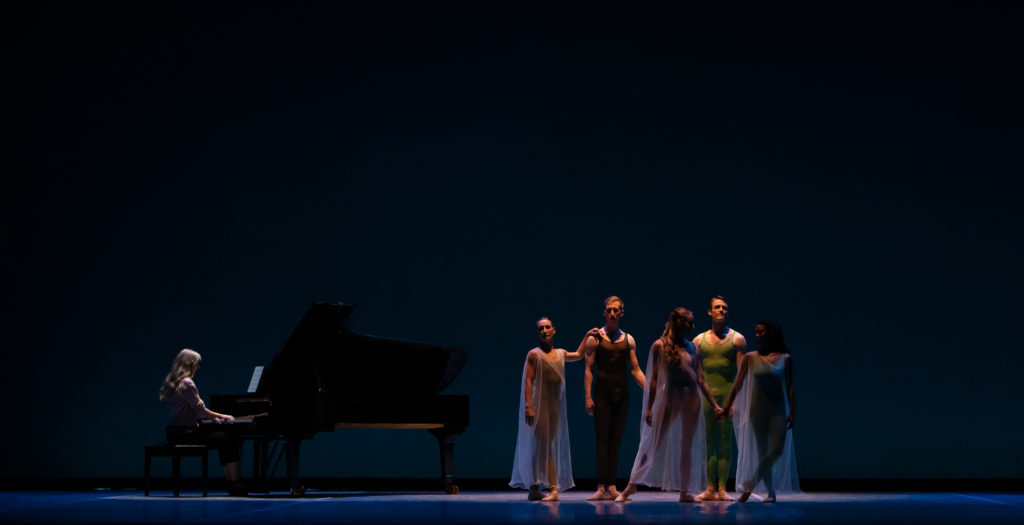
The entire mood shifted too. “I knew it was never going to be what it was on film,” says Mills. “I wanted a different version that was special for a different reason. After a year and a half of not being able to be with our audience, I wanted to celebrate dance in its purest form, offering an uplift. And at the end of the day, it was onstage.”
Penny Saunders: Amiss
Grand Rapids Ballet resident choreographer Penny Saunders took a different approach when translating her 2020 dance film, Amiss, to the stage. Saunders chose to project the original film and outtake footage onto screens behind the dancers and on other devices (one computer and a few phones) around the space. The dancers interacted with all of these devices throughout the piece to introduce retrospection and “layers of reality” during GRB’s live performances in March.
The original film integrated home video from GRB company members, with editing by Quinn Wharton and her own sound mixing of dancers’ commentary. Since they were limited to personal-device recordings, Saunders wasn’t particularly pleased with the result. So when artistic director James Sofranko asked if she could turn it into a stage piece two years later, Saunders was unsure where to begin.
“I thought, How do I deal with that—something I don’t necessarily love, and where all the original source material was from living rooms, apartments, outside, etc.? It was never even a piece, but a bunch of pieces we put together to get its own dynamic through editing.”
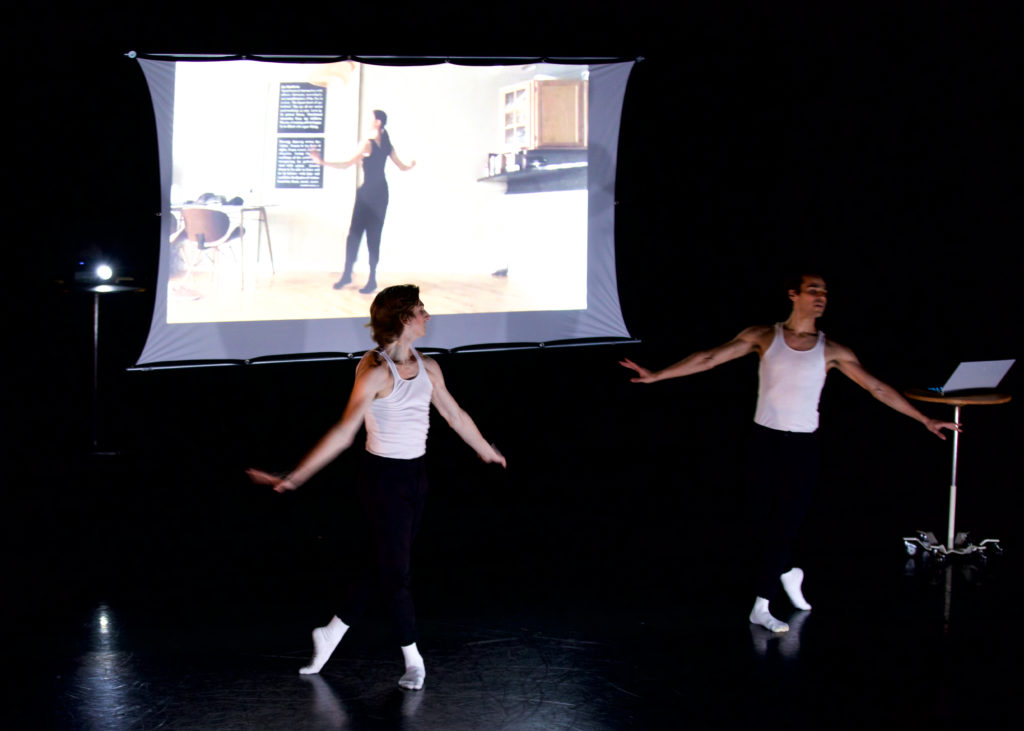
To solve these issues, Saunders leaned into the idea of the third dimension. She cast two dancers whose humorous dynamics as roommates stood out to her in the original film; they provided new commentary that would overlay the original audio as the video played behind them. Saunders told them, “Make fun of me, make fun of you, be reflective—whatever you can do to reflect on the time then and the moment now. And let it be funny, don’t hold back!”
In keeping with the original aesthetic, the dancers wore casual clothing—the same (or similar) sweatpants and tank tops they wore in the original film. But they performed a mix of old and new choreography to the sound of their voices, taking moments to pause, watch the projection and react to it. Saunders didn’t want to take the work too seriously, as it wasn’t too serious to begin with.
“It’s not a normal piece at all,” she says, “which is fun because I would have never gotten here without that original source material. I learn something new with every risk I take, and I like that.”
Yusha-Marie Sorzano: Yet Not Too Near
Los Angeles–based Yusha-Marie Sorzano is no stranger to taking risks either. While adapting her virtual work Yet Not Too Near for Ballet Idaho, she notes, the piece underwent two different creative processes as she expanded her original concept.
Yet Not Too Near, inspired by Kahlil Gibran’s poem “On Marriage,” explores the idea of personal space and autonomy within a close relationship—a pertinent concept during the pandemic quarantine. In the original duet made for Ballet Idaho’s 2021 virtual season, Sorzano worked with the dancers for two weeks over Zoom before filming. “There wasn’t a huge, thought-out mood board like a lot of filmmakers have,” she says, “and it wasn’t an extensive process. But it was honest, and that’s the best place you can start when you’re making anything.”
When asked to choreograph for the company’s March program this year, Sorzano knew she wanted to revisit the ballet. But she needed to make some adjustments. In the original film, the dancers remained distanced and performed under two separate bistro lights. For the in-person adaptation, Sorzano brainstormed with her lighting designer, envisioning beams of light cast to create “hallways” the dancers would pass through.
Sorzano also adjusted the choreography so the dancers would interact physically and travel—both things she could not do in her house during quarantine. She also expanded the length and modified the score, swapping the final piece of music for one she felt was more relevant now. “There are elemental sounds in it, like the wind and ocean. The idea of starting inside, where the work began virtually, before introducing the outdoors gives a semblance of returning to connectivity with the outside world.”
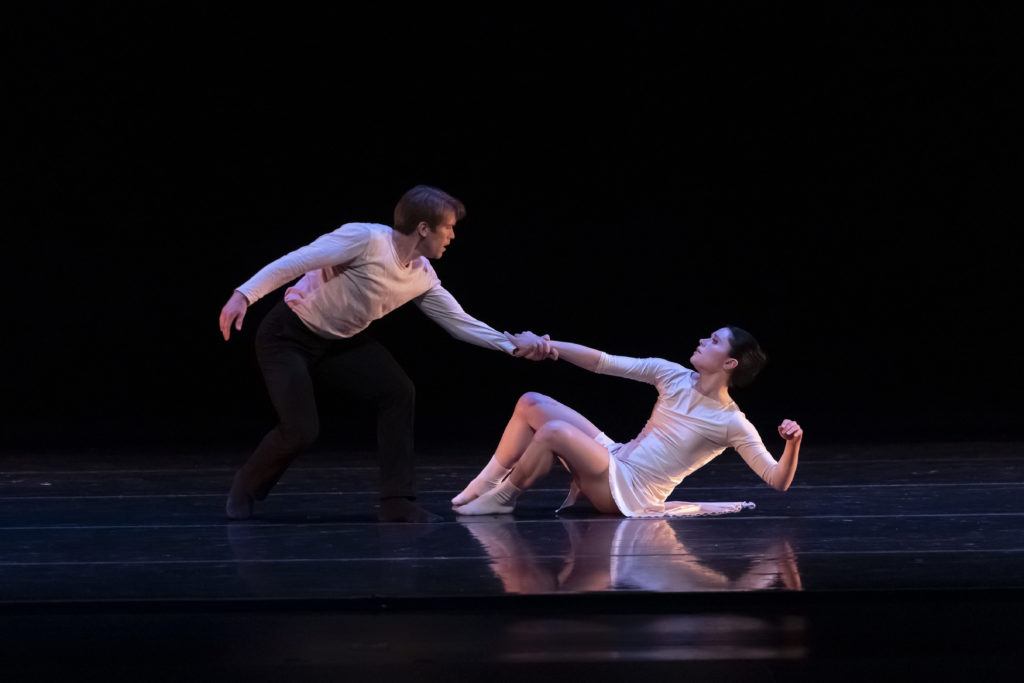
Of the overall experience, Sorzano says: “You can envision and have an intention, but when it really comes down to it, it’s all chance elements coming together. I’ve been reminded of the importance of accepting change, process and hiccups as we go. It takes compassion for all of us as we do this thing we love so much.”
